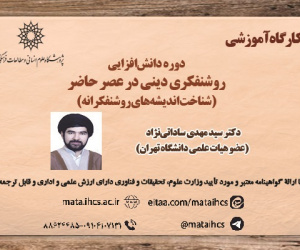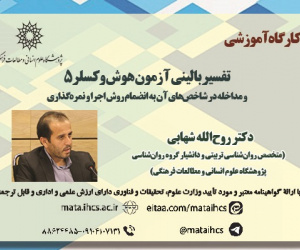«معرفت شناسی قرآن بنیان» به مثابه ی زیرساخت معرفتی برای دست یابی به علوم انسانی اسلامی (مقاله علمی وزارت علوم)
درجه علمی: نشریه علمی (وزارت علوم)
آرشیو
چکیده
تلاش برای شکل گیری علوم انسانی اسلامی، نیازمند تبیین الگوی معرفتی (پارادایم) حاکم بر آن فضای علمی است. پارادایم ها بر مبانی هستی شناختی، معرفت شناختی، روش شناختی، انسان شناختی و ارزش شناختی و ... استوارند. مسئله ی این مقاله، دست یابی به یک الگوی مفهومی از دیدگاه قرآن در محور معرفت شناسی است. در این مقاله از روش داده بنیاد استفاده شده است و نتیجه ی تحقیق را می توان چنین بیان کرد: دالّ مرکزی درباره ی «علم و معرفت» و امور مرتبط با آن در دیدگاه اقتباس شده از قرآن، «شبکه ای بودن معرفت» است. مقصود از «معرفت شبکه ای»، تلاش برای کشف موقعیت وجودی (روابط و آثار) و کارکرد یک پدیده در شبکه ی منسجم کل هستی است که مبتنی بر واقعیتی خودبنیاد (وجود بی نهایت) است و این انطباق، معیار صدق شمرده می شود. این کشف، با استفاده از ترکیب حواس با عقل (استدلال های منطقی اعم از برهان، استقرا و لوازم بیّن) در حداقلِ صعود معرفتی، و با استفاده از شهود قلبی (اتحاد وجودی با پدیده)، در حرکت به سمت حداکثر صعود معرفتی (آگاهی به شبکه ی هستی) انجام می شود. متخالف های «علم و معرفت» در قرآن (مانند: نسیان، جهل، سفه، غفلت، ریب، شک، خرص، امانیّ، ظن، مریه، ...) نیز دارای ملاک واحدی هستند که «بی توجهی به رابطه »ی پدیده ها با شبکه ی هستی و با رأس هرم هستی است.Qurʾan-Based Epistemology As an Epistemic Infrastructure for the Islamic Humanities
Trying to form Islamic humanities requires explaining the epistemological model (paradigm) that governs that scientific environment. The paradigms are based on ontological, epistemological, methodological, anthropological, and value-based foundations. The problem addressed in this paper is how to achieve a conceptual model from the perspective of the Qur'an in epistemology. For this, the data-grounded method has been used, and the result of the research can be stated as follows: The central signifier of “science and knowledge” and its related matters in the view adapted from the Qur'an is "network-based knowledge." The purpose of "network-based knowledge" is to try to discover the existential situation (relationships and effects) and the function of a phenomenon in the coherent network of the entire universe, which is based on a self-based reality (infinite existence), and this conformity is considered as the criterion of truth. This discovery is made by using the combination of the senses with the intellect (logical arguments including demonstration, induction, intuition, etc.) in the minimum epistemic ascension and by using the intuition of the heart (existential unity with the phenomenon) in moving towards the maximum epistemic ascent (awareness of the network of existence). The opposites of “knowledge and cognition” in the Qur'an (such as forgetfulness, ignorance, foolishness, negligence, doubt, suspicion, greed, hope, conjecture, accusation,) also have the same criterion, which is “ignoring the relationship” of phenomena with the network of existence and with the ultimate level of the hierarchy of existence.







